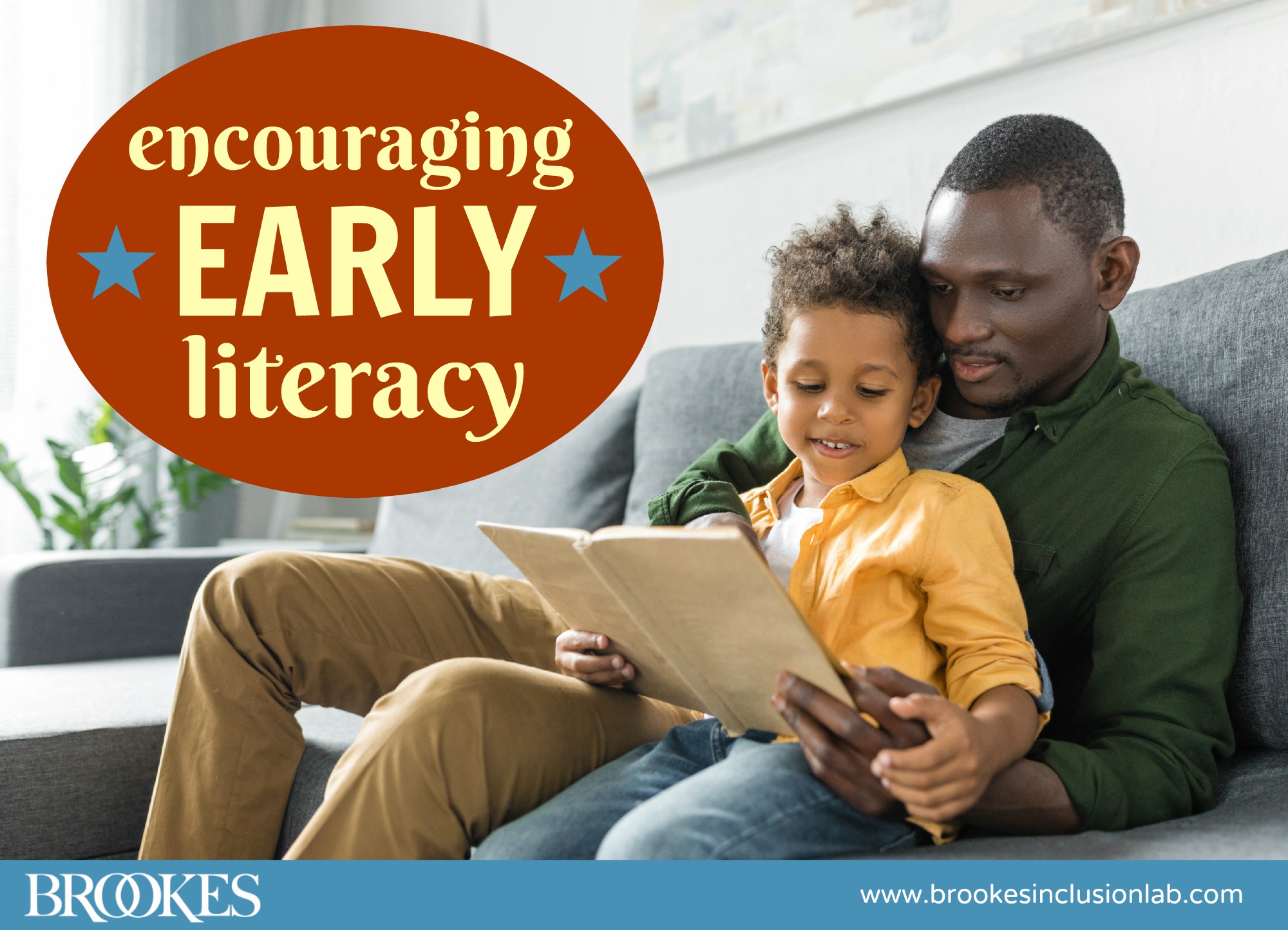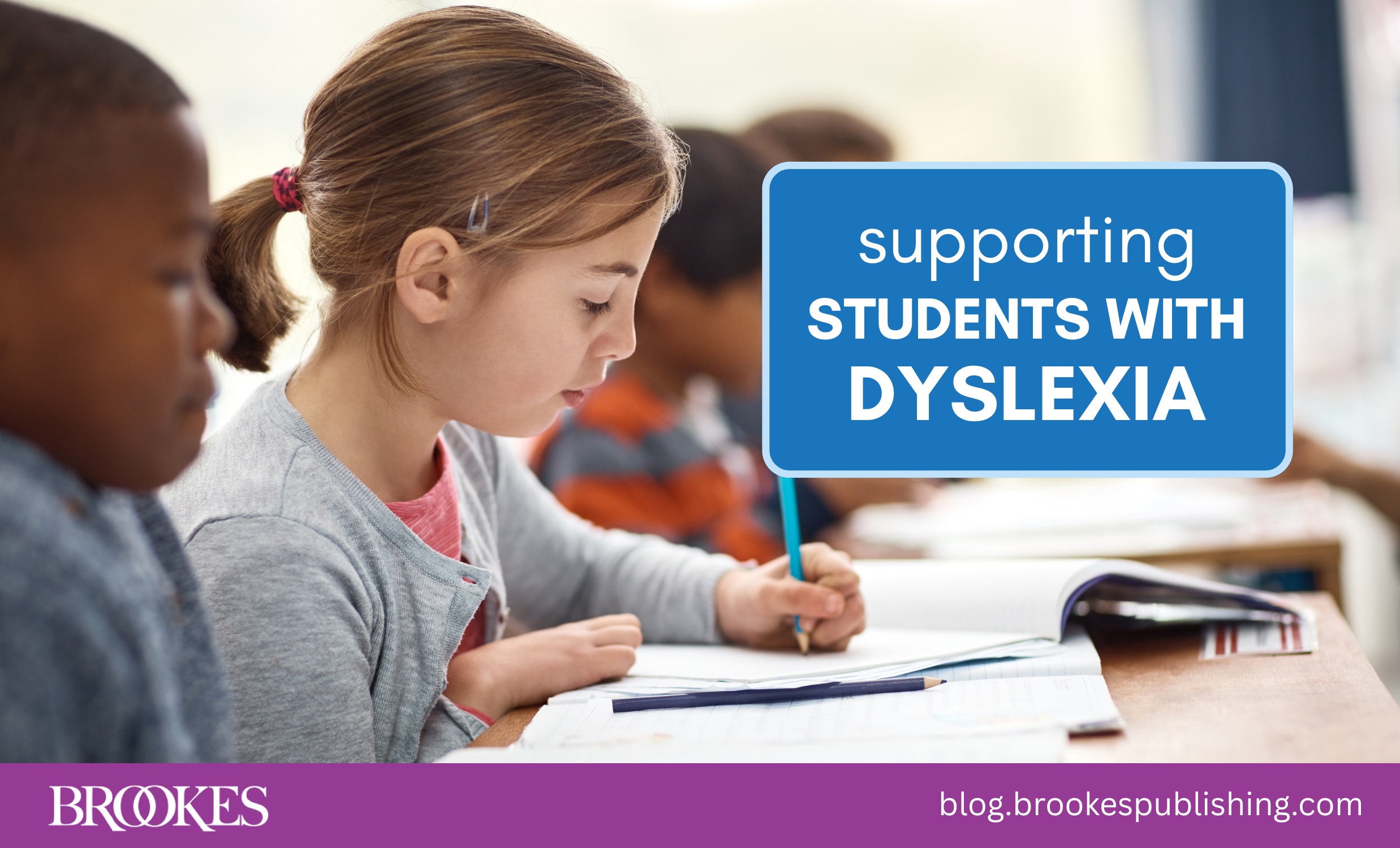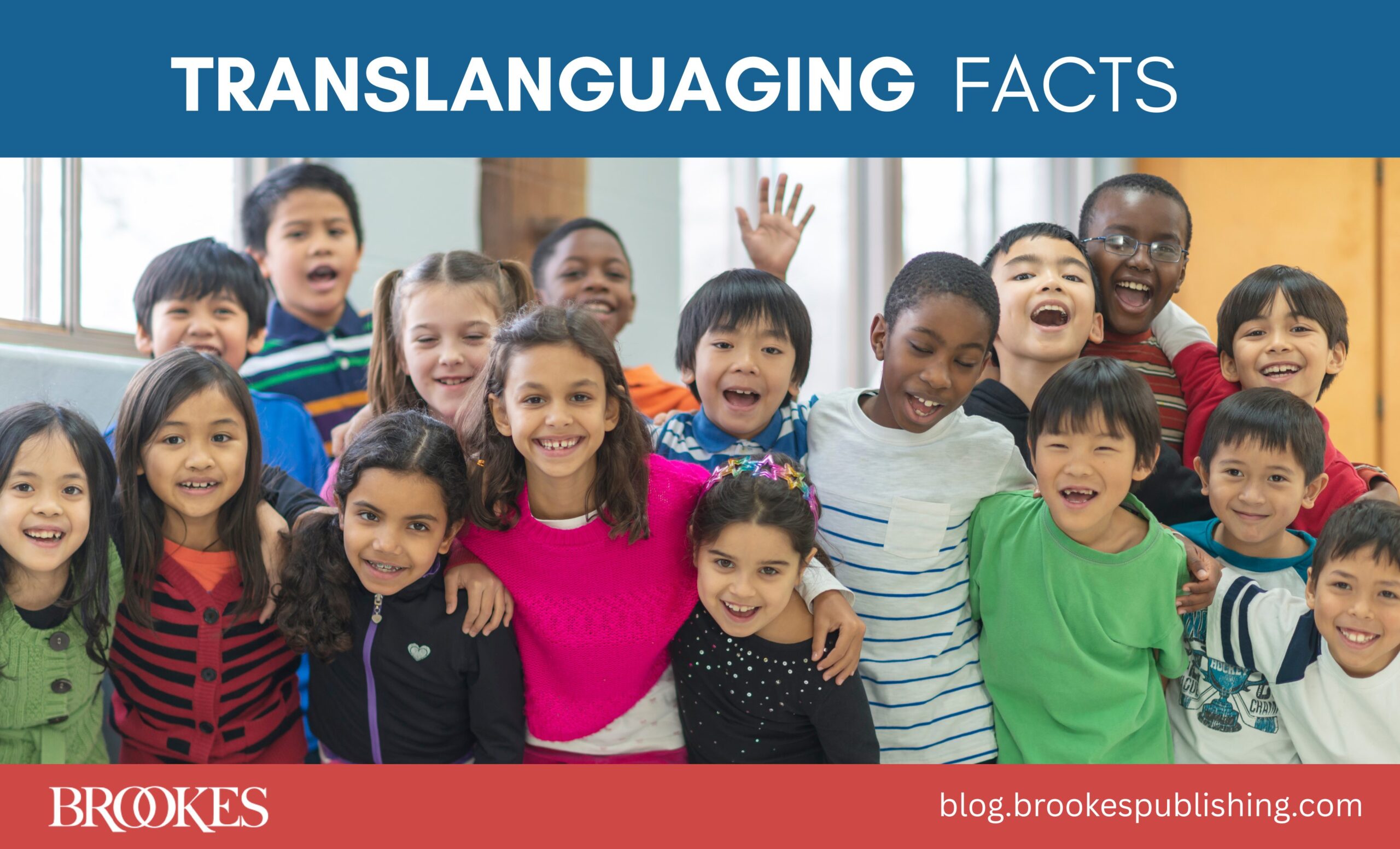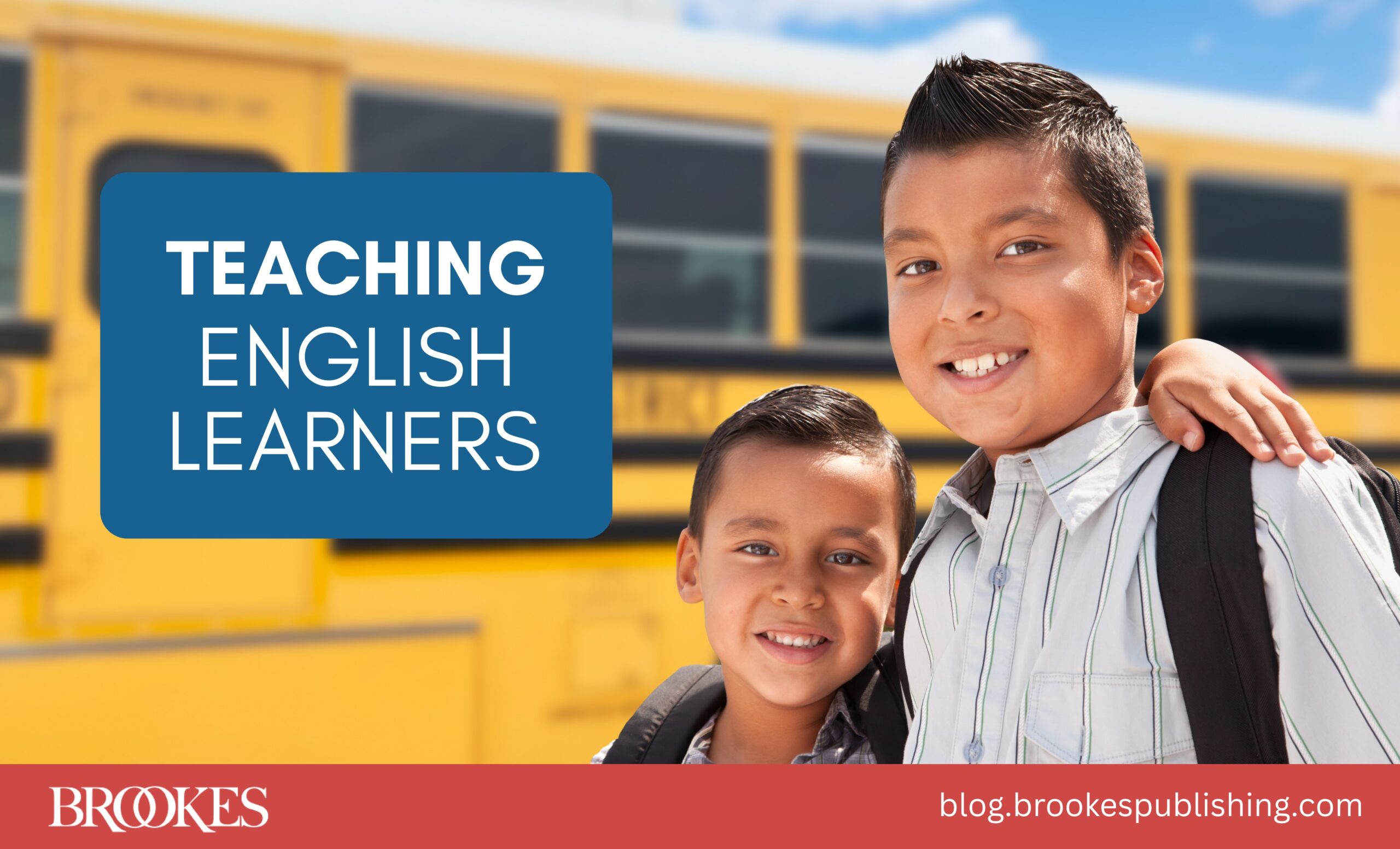12 Ways Parents and Teachers Can Encourage Early Literacy and Language Skills
April 28, 2020
Whether you’re an early childhood teacher or a parent (or both), you play an important part in helping the children in your care become literate citizens. Even at a time of great uncertainty and change, the days are still filled with rich opportunities for nurturing young children’s language and literacy skills, from preplanned dramatic play activities to spontaneous talk at the dinner table.
Today’s post gives you 12 specific, practical tips for giving young children’s early literacy and language skills a boost, adapted from and inspired by some new and classic Brookes books from top early childhood experts. Teachers: share these ideas with parents of young children, and tuck them away for your own use when your classroom is safe to reopen.
 Help children make their own books. Homemade books are a great way to practice literacy skills and preserve memories of special events such as field trips or a fun family outing you took earlier this year. Help children who can’t yet write by transcribing words as children say them and then reading the words back, pointing to the words to make the connection between spoken and written language. Include the child’s artwork to illustrate the book. (This can easily be adapted for classroom use, too. When you’re back in session, try writing a book as a whole class. Be sure to include a dictated or written idea and an illustration from each child.)
Help children make their own books. Homemade books are a great way to practice literacy skills and preserve memories of special events such as field trips or a fun family outing you took earlier this year. Help children who can’t yet write by transcribing words as children say them and then reading the words back, pointing to the words to make the connection between spoken and written language. Include the child’s artwork to illustrate the book. (This can easily be adapted for classroom use, too. When you’re back in session, try writing a book as a whole class. Be sure to include a dictated or written idea and an illustration from each child.)
Make literacy-related prop boxes. Prop boxes are themed dramatic play activities bundled together in a decorative box. Great for use at home as well as in classrooms, they typically include a few books related to a theme, puppets or other toys children can use to help reenact the stories, and props such as paper and markers to help kids practice literacy skills as they play. For example, you might paint a box to look like a schoolhouse and stock it with books about school and props such as alphabet books, chalk, a chalkboard, a pointer, writing implements, and paper. Or if a child is missing trips to the store, make a prop box that looks like a grocery store or another kind of shop. Include an apron and hat, a book on buying groceries and other books about healthy foods, a stamper, cereal boxes, play money, and coupons. These prop boxes give kids endless opportunities to practice early literacy skills while they role-play.
Give favorite play areas a literacy infusion. Take note of where your kids like to play the most, and include literacy-related items and props in those areas. For example, if you have a child-sized kitchen set or play house that the children love, stock it with cookbooks, notepads, markers, large pencils, blank recipe cards, a telephone book and telephone, food coupons, and grocery store fliers. These types of items and activities can help children understand and appreciate the purposes of literacy and language skills in real life.
 Have extended responsive conversations. Children’s language skills are enriched and expanded when adults engage them in back-and-forth conversations that extend over multiple turns and encourage the child to play an active role. Asking children to tell personal narratives about their experiences is a good way to initiate these responsive conversations. Dickinson & Morse use the phrase “strive for five” as a rule of thumb—that is, try to have a sequence of five back-and-forth exchanges with the child before the conversation ends.
Have extended responsive conversations. Children’s language skills are enriched and expanded when adults engage them in back-and-forth conversations that extend over multiple turns and encourage the child to play an active role. Asking children to tell personal narratives about their experiences is a good way to initiate these responsive conversations. Dickinson & Morse use the phrase “strive for five” as a rule of thumb—that is, try to have a sequence of five back-and-forth exchanges with the child before the conversation ends.
Point out signs and labels. Call the child’s attention to words in print around the house, in the classroom, or on a drive. Point out words on a street sign, read labels on food items or art supplies together, and show the child other forms of print (on billboards, in newspapers and magazines). Putting labels on objects can also help—point to them throughout the day (or during circle time, when you’re back in school). Awareness of this kind of “environmental print” is a very important part of developing reading and language skills.
 Play with rhymes. Teach young children funny rhymes using a rhyming book and laugh about the stories in it. Play rhyming games of coming up with words that rhyme with a particular word, for example, for cat, try to come up with words such as fat and sat.
Play with rhymes. Teach young children funny rhymes using a rhyming book and laugh about the stories in it. Play rhyming games of coming up with words that rhyme with a particular word, for example, for cat, try to come up with words such as fat and sat.
Introduce unusual words. Don’t underestimate a young child’s ability to learn new words, even longer and more unusual ones. Introduce sophisticated vocabulary words, have the child say them, and then ask the child to try to figure out what the words mean. Words connected to a child’s interests or a favorite book might be especially fun to learn. Some children may enjoy learning the long, multisyllabic names of dinosaurs; others may like the fanciful words in Dr. Seuss books.
Serve up some talk at the table. Sharing food together can provide a perfect opportunity to engage in enriching talk and expand children’s language skills. For high-quality table talk, you might:
- Share updates about your day
- Talk about and plan things you would like to do in the future, when you no longer have to stay at home—vacations, field trips, a play date in the park
- Have a conversation about the food—do you like today’s meal? How was the food grown? How do you think it was prepared?
- Share the best and worst thing that happened today or yesterday
- Take turns telling jokes
 Welcome storytellers. Children love to hear stories—not just in books, but from people themselves. Boost early language skills by connecting kids with interesting guests who can share their stories and answer children’s questions. While you’re at home, you might videochat with the child’s grandparent or a family friend and ask them to tell stories about what it was like when they were young. And teachers, once you’re back in school, consider inviting some guest speakers to your classroom to talk about their jobs or areas of expertise that children might find interesting.
Welcome storytellers. Children love to hear stories—not just in books, but from people themselves. Boost early language skills by connecting kids with interesting guests who can share their stories and answer children’s questions. While you’re at home, you might videochat with the child’s grandparent or a family friend and ask them to tell stories about what it was like when they were young. And teachers, once you’re back in school, consider inviting some guest speakers to your classroom to talk about their jobs or areas of expertise that children might find interesting.
Look for words in other words. This is a simple game parents and teachers can play anytime and anywhere. Show the children a longer word and ask them to play “print detective” and find smaller words within it. For example, they can find can in candy, pot in potato, and to, get, and her in together.
 Proudly display children’s early writing attempts. When you value and celebrate children’s efforts to write, they’ll be more likely to try other writing activities. Showcase children’s work on wall displays or in albums, portfolios, or scrapbooks. Write a label, title, or caption with the child’s help, and encourage the child to add their signature. Ask the child to talk with you about how they created their masterpiece.
Proudly display children’s early writing attempts. When you value and celebrate children’s efforts to write, they’ll be more likely to try other writing activities. Showcase children’s work on wall displays or in albums, portfolios, or scrapbooks. Write a label, title, or caption with the child’s help, and encourage the child to add their signature. Ask the child to talk with you about how they created their masterpiece.
Make modifications to increase access. For young children with disabilities, modifications may be needed to provide opportunities for developing preliteracy skills. To increase access to books at home and at school, parents and teachers might:
- Attach foam pieces to the edges of the pages to make page turning easier
- Simplify books by stressing key words, shortening sentences, and abbreviating text
- Use objects, photographs, icons, and other materials that extend the concepts and vocabulary
- Add tactile experiences while reading to children who experience vision and hearing loss
What’s your favorite strategy for boosting young children’s language and literacy skills? Share a game or activity you love in the comments section below!
Like today’s blog post? Check out the books that inspired it:
Tips 1-3 adapted from User’s Guide to the Child/Home Early Language and Literacy Observation (CHELLO) by Susan B. Neuman, Julie Dwyer, & Serene Koh
Tip 4 adapted from Connecting Through Talk by David K. Dickinson & Ann B. Morse
Tips 5-7 adapted from Pathways to Competence, Second Edition, by Sarah Landy
Tips 8-11 adapted from Talk to Me, Baby! by Betty Bardige
Tip 12 adapted from Assistive Technology for Young Children by Kathleen Curry Sadao and Nancy B. Robinson




Write a Comment
Your email address will not be published. Required fields are marked *
Post a Comment